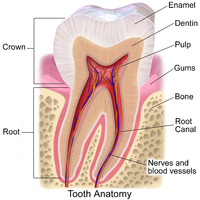
Photo from wikipedia
Age is an important parameter to better understand wildlife populations, and is especially relevant for interpreting data for fecundity, health, and survival assessments. Estimating ages for marine mammals presents a… Click to show full abstract
Age is an important parameter to better understand wildlife populations, and is especially relevant for interpreting data for fecundity, health, and survival assessments. Estimating ages for marine mammals presents a particular challenge due to the environment they inhabit: accessibility is limited and, when temporarily restrained for assessment, the window of opportunity for data collection is relatively short. For wild dolphins, researchers have described a variety of age-determination techniques, but the gold-standard relies upon photo-identification to establish individual observational life histories from birth. However, there are few populations with such long-term data sets, therefore alternative techniques for age estimation are required for individual animals without a known birth period. While there are a variety of methods to estimate ages, each involves some combination of drawbacks, including a lack of precision across all ages, weeks-to-months of analysis time, logistical concerns for field applications, and/or novel techniques still in early development and validation. Here, we describe a non-invasive field technique to determine the age of small cetaceans using periapical dental radiography and subsequent measurement of pulp:tooth area ratios. The technique has been successfully applied for bottlenose dolphins briefly restrained during capture-release heath assessments in various locations in the Gulf of Mexico. Based on our comparisons of dental radiography data to life history ages, the pulp:tooth area ratio method can reliably provide same-day estimates for ages of dolphins up to about 10 years old.
Journal Title: PLoS ONE
Year Published: 2020
Link to full text (if available)
Share on Social Media: Sign Up to like & get
recommendations!